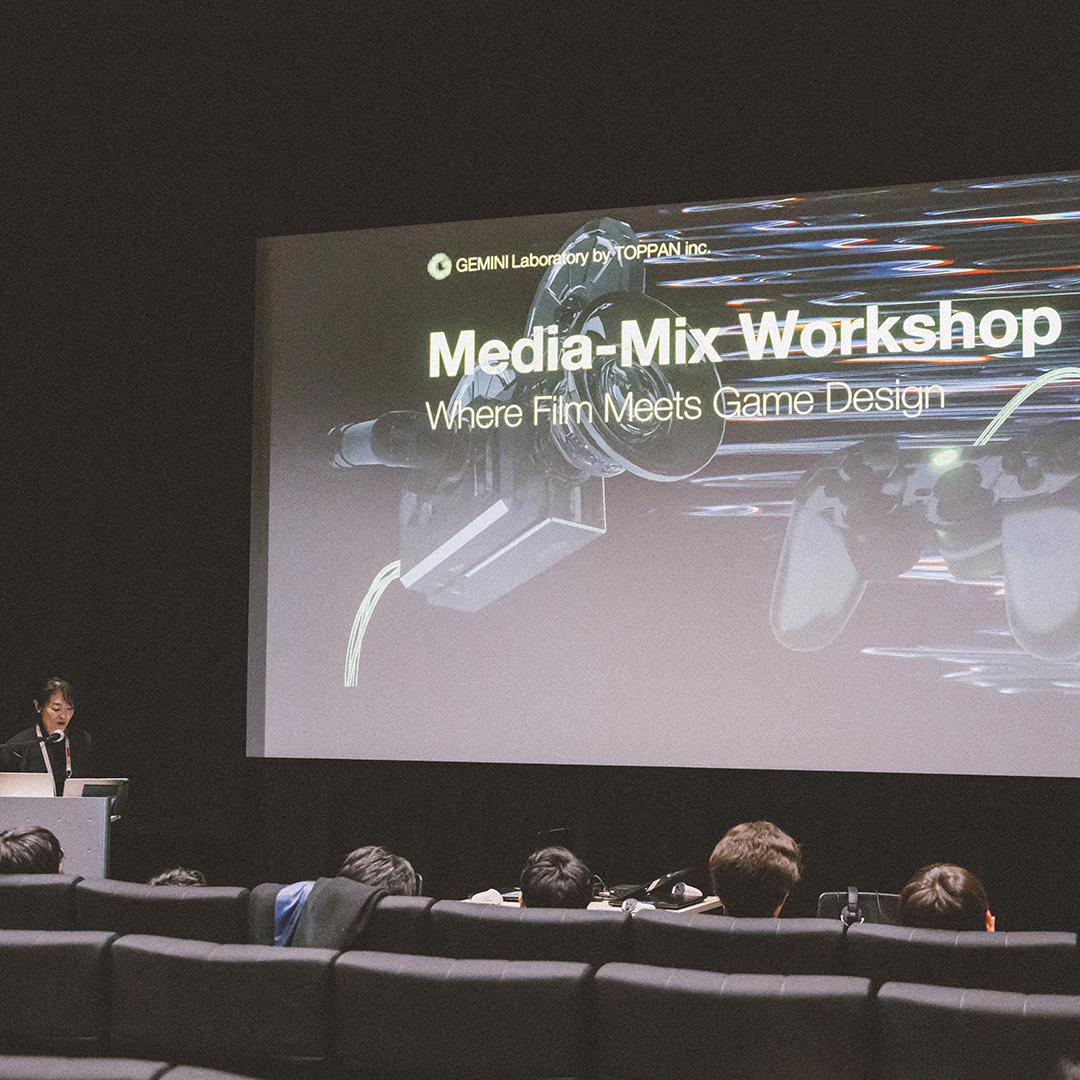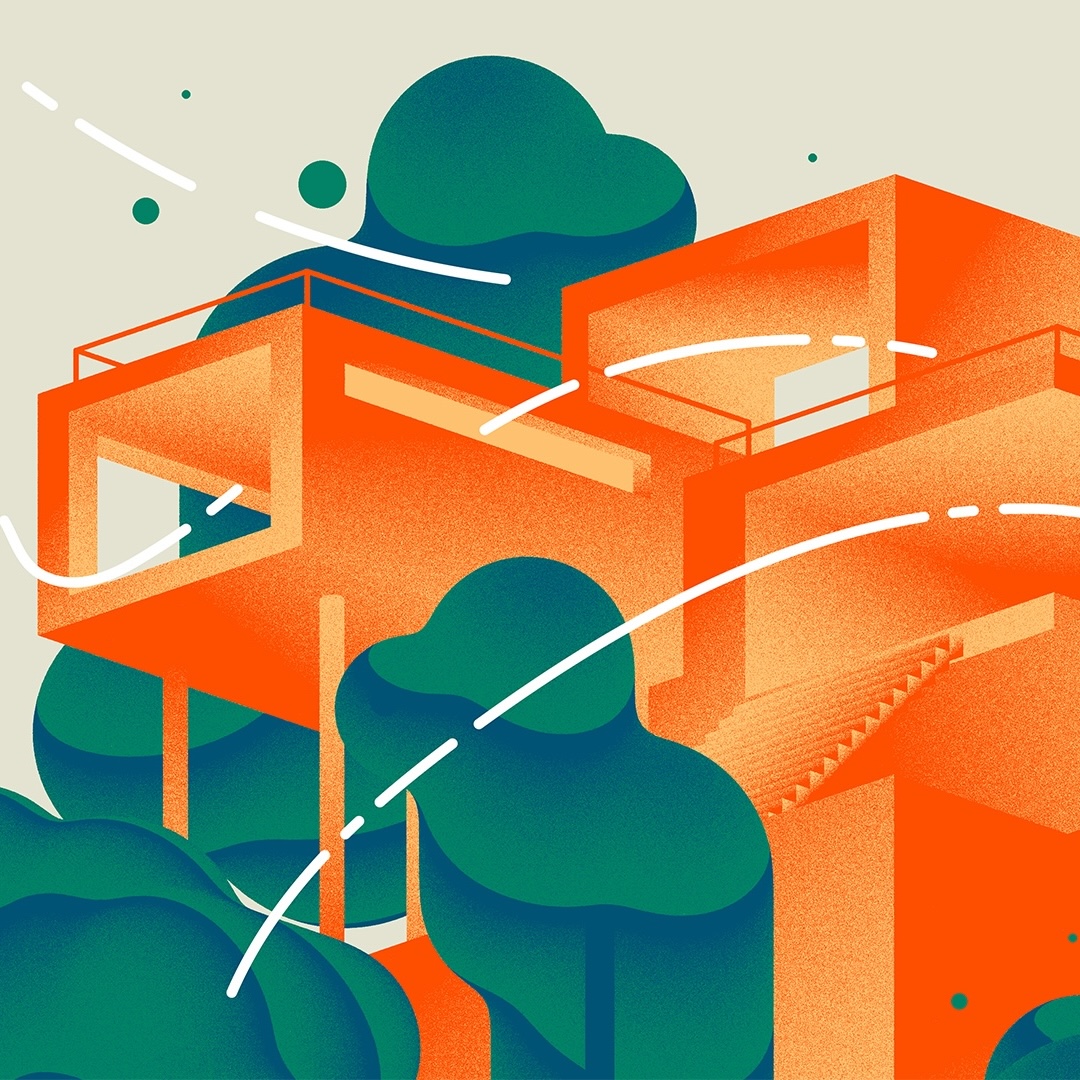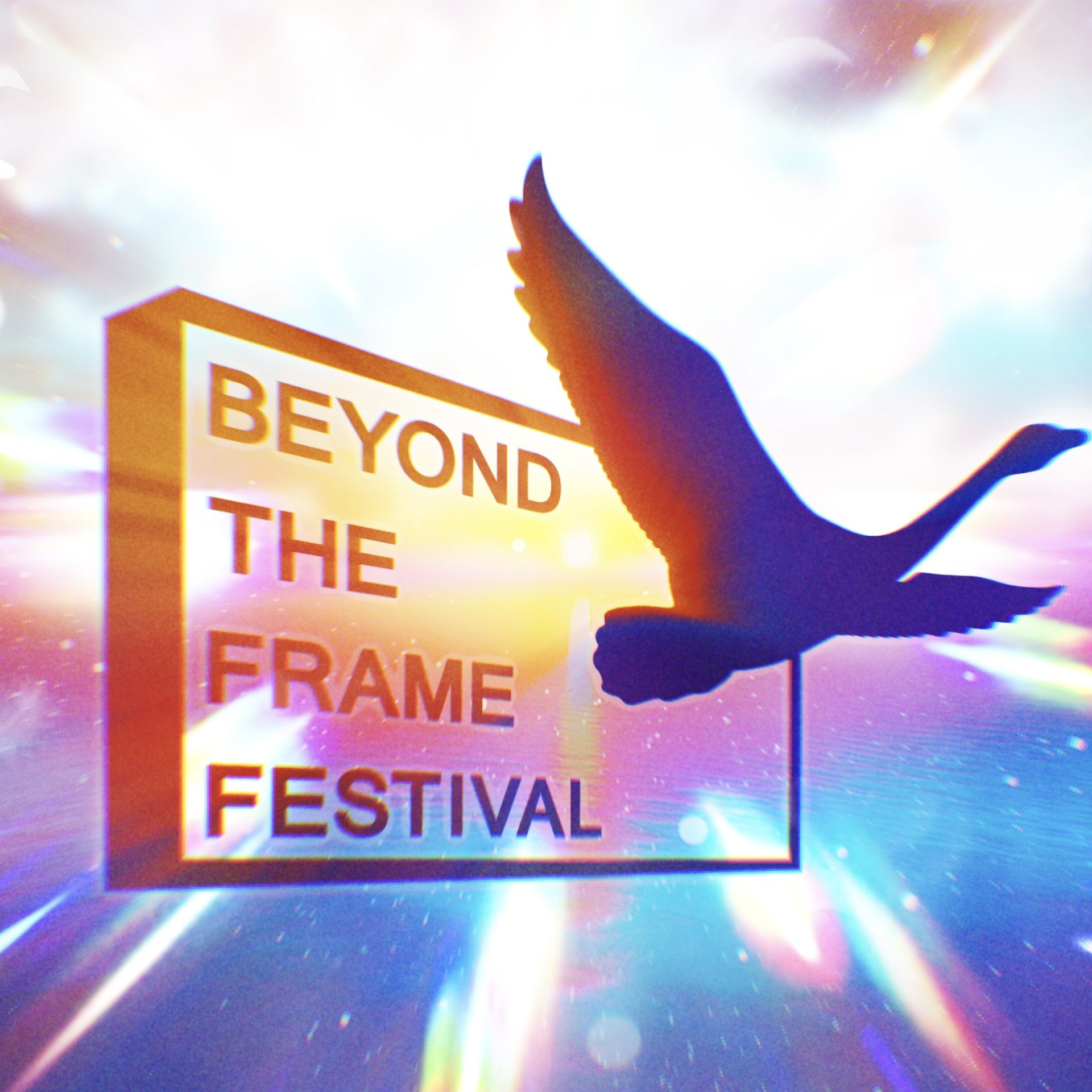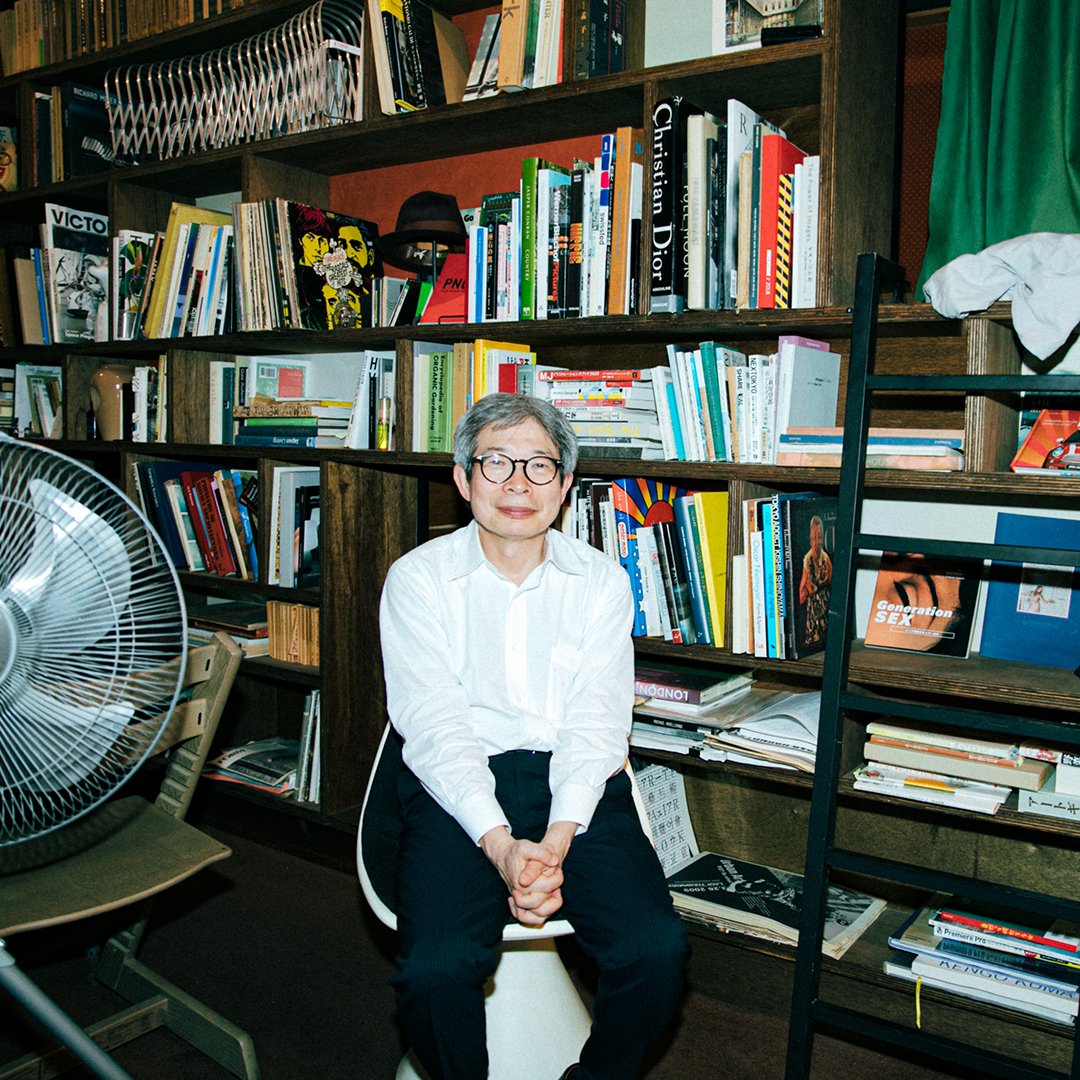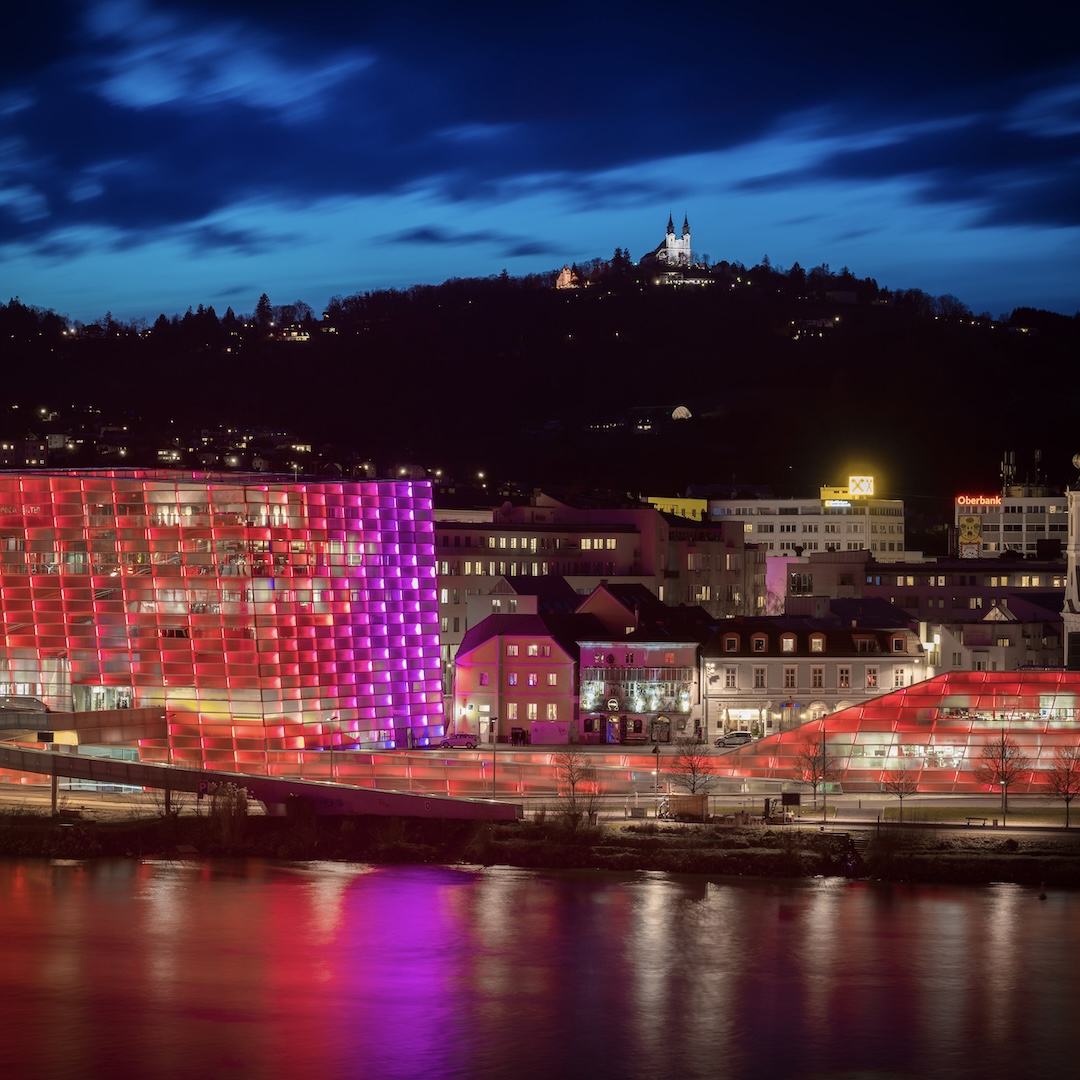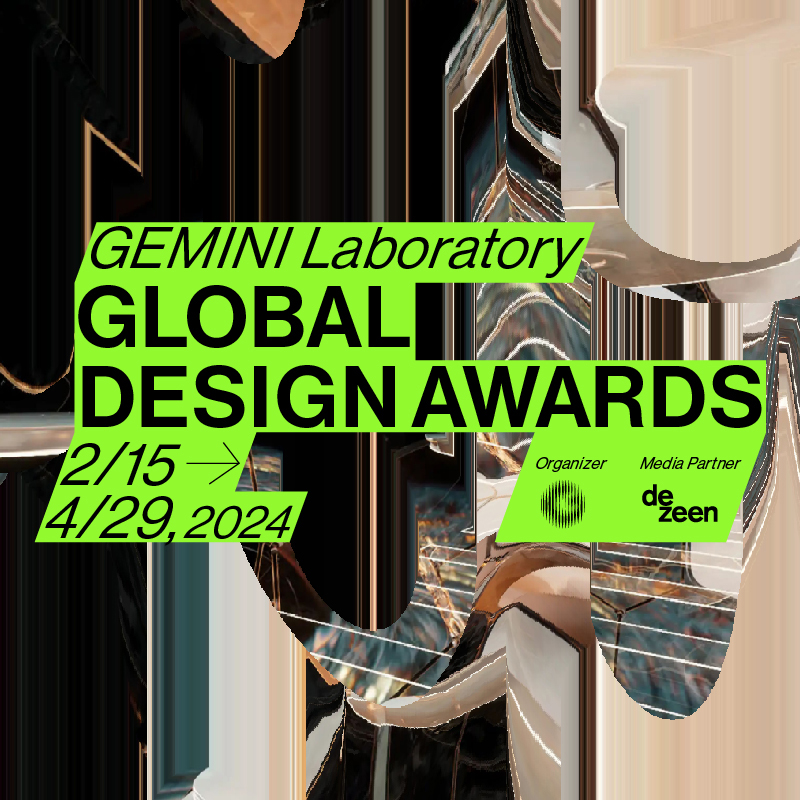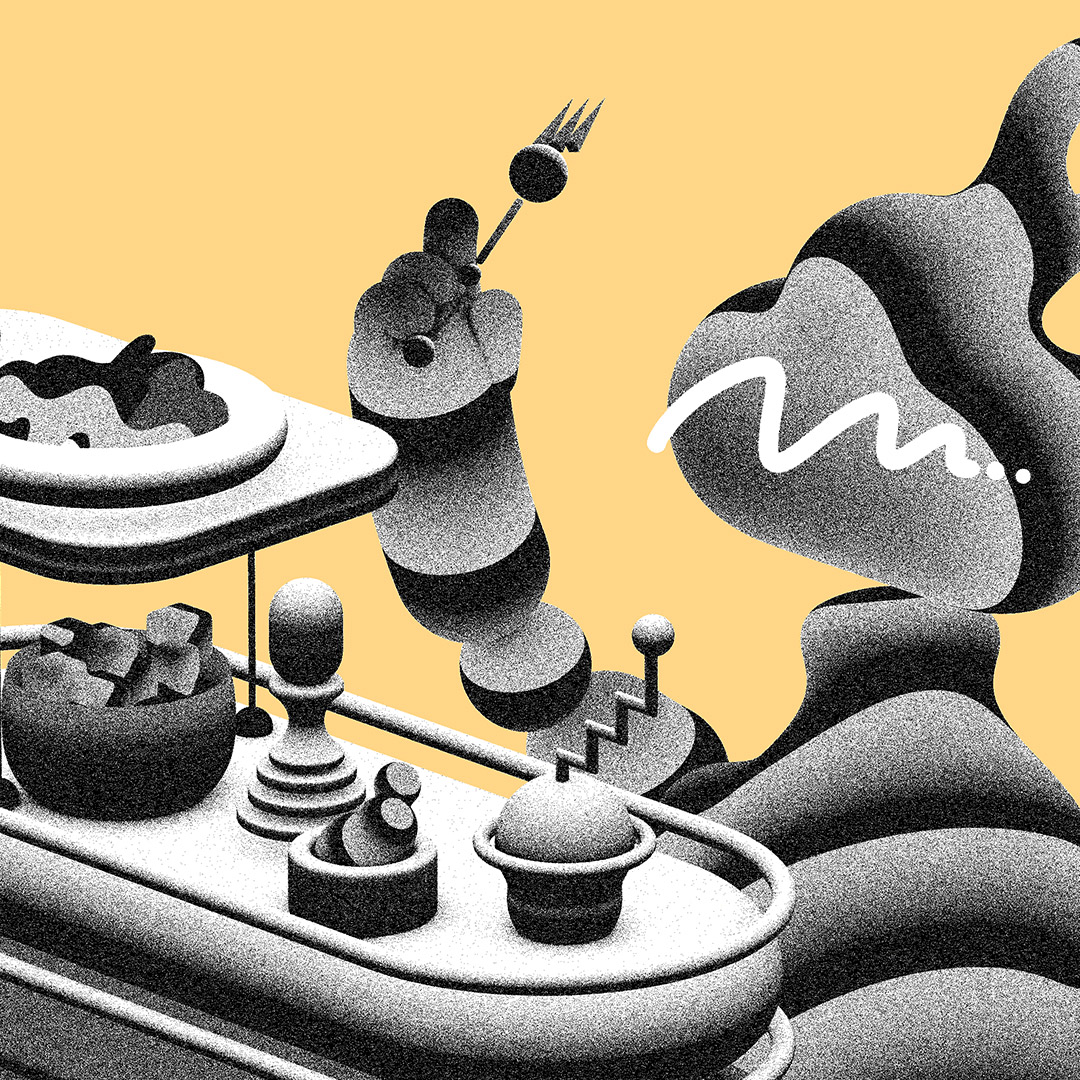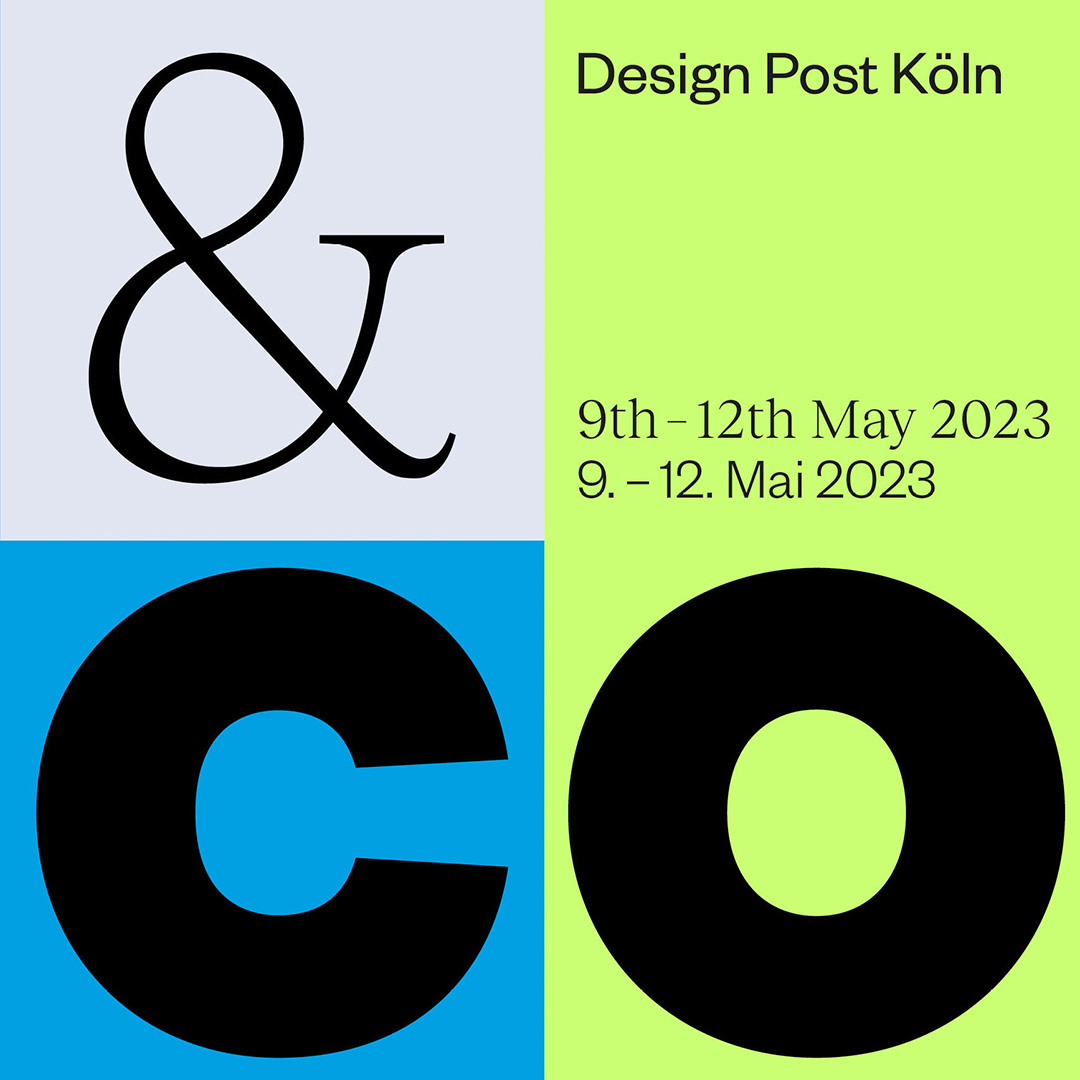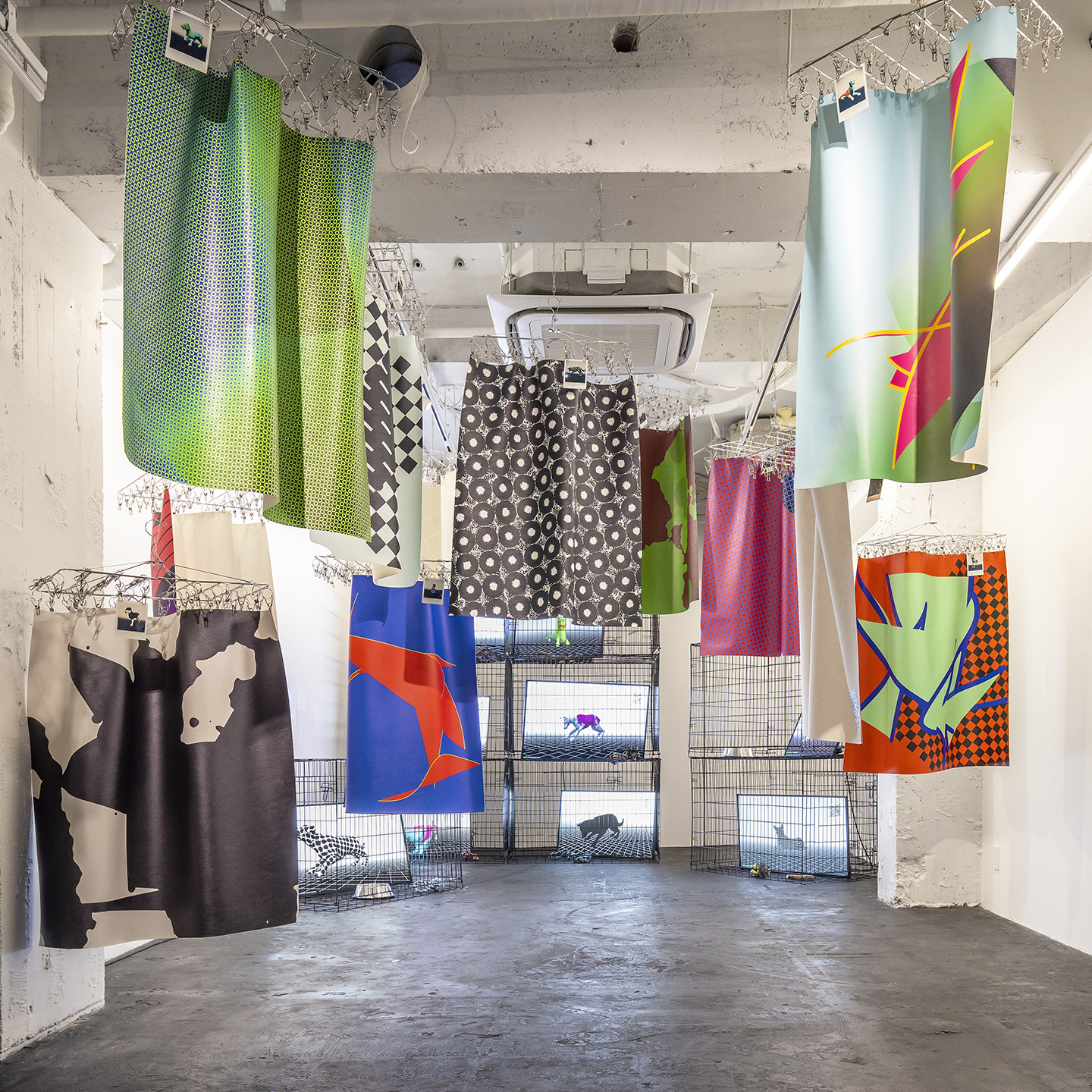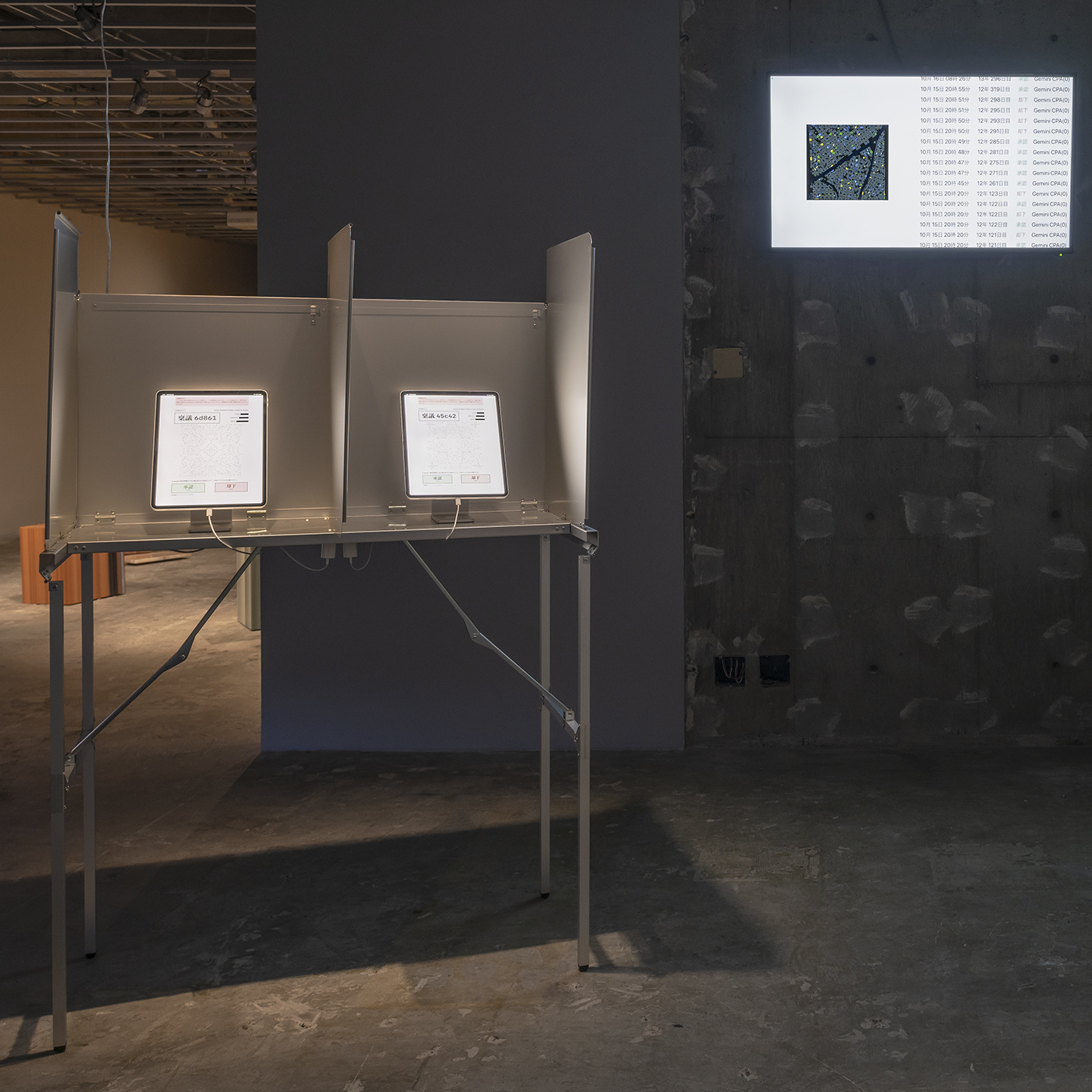“Kami no Ishi (Paper Stone)” is a project by Hideyuki Nakayama and Taichi Sunayama, two architects, focusing on a stone that has no concept of size or meaning. The project began with the very simple concept of creating a stone out of paper, and is now exploring further possibilities of printing by using new materials such as wood and cloth.
The exhibition “Cat’s Narrow Road” currently being held at the Toyota Municipal Museum of Art allows visitors to go through the entirety of this project, which has continued from 2017 to the present day. Hideyuki Nakayama, who has been in charge of many famous buildings, and Taichi Sunayama, a researcher of architectural design using digital technology, will discuss what is fun about continuing to create stones.
An architect is a job that requires meaning.
With paper, I want to create something that has no meaning.
The project began with the Paper Shapes Exhibition 2: Fuwafuwa, Gorogoro, Jiwajiwa held in 2017, in which three groups of young architects explored the new possibilities of paper. Initially, Takeo, a paper trading company that planned the exhibition, offered Nakayama the opportunity to “think of products using paper based on architectural thinking” and “explore the possibilities of three-dimensional objects and printing made with paper.” The very simple concept of “making stone out of paper” seems to have been born from the backlash of architectural work, where everything is questioned as to its meaning.


Nakayama: An architect’s job is to be asked why everything has to be that way, and we get the job by thoroughly explaining it with drawings and words. As a reaction to this, I wanted to do something without meaning to the fullest, at least when creating something on paper. I decided to try making a stone with no sense of meaning out of paper, and I ended up working together with Mr. Sunayama, who found it interesting.
In the past, Mr. Sunayama used physical calculations to simulate a bed mattress, and exhibited a mixed-media object with the shape of the mattress woven into the Corbusier building. There is a creepy sense of discomfort and narrative in everyday scenery, and I thought that such a balance of Sunayama’s technique and sensibility was perfect for “Kami no Ishi.”

Sunayama: After graduating from the Department of Sculpture at Tama Art University, I went to France to conduct research on creating architectural forms through computer programming at the architecture school there. I have been influenced by Mr. Nakayama’s texts since those days when I had a strong interest in the concept of architecture rather than the physically existing buildings themselves. Whenever I look at Mr. Nakayama’s texts, drawings, and architectural works, I always think that he is a rare architect who effortlessly matches what he creates with his unique concept. This is evident in even a single line drawn by Mr. Nakayama.
Using “stone” as a platform:
Encountering the bodies and perceptions of others
Because stones lying on the roadside are readily available and easily scanned, they have become 3D data and can be found on the Internet in abundance. There have been artists and designers in the past who have created something that looks like a stone, but according to Sunayama, there were few that gave the impression of depth as a work of art. “Kami no Ishi” followed a unique process of going back and forth between the physical and the digital in order to create depth in the work and differentiate it from past examples.

Sunayama: To tell the truth, with “Kami no Ishi,” Mr. Nakayama had almost completed the work simply by making drawings and giving words, so all I had to do was to work out the specific production process. Although the actual stone has countless irregularities, ranging from large circumferences to small scratches, “Kami no Ishi” is composed of no more than about 25 facets. Through repeated physical simulations, including a “portrait stone painting” competition with the occasional help of Mr. Nakayama’s office staff, we realized that the number of faces, 25, is the line that separates a “copy” from a “drawing.
Nakayama: For the “portrait stone painting,” I used a cutter to simplify a lump of Styrofoam into about 25 facets, like the beveling of a taro. Just as a portrait can be made to look like a person by capturing facial features with only a few lines, the stones were also “sketched” as much as possible to identify the features.

Sunayama: Normally, a 3D scan of a stone produces high-definition data formed by triangular polygons, but although the data is supposed to be high-definition, it does not look like a stone at all. Conversely, by inserting the process of creating a sensory simplified model, the data can now tell us that it is that stone.
It was also interesting to digitally transcribe the model of “Kami no Ishi” made by Mr. Nakayama’s office. I felt as if I was participating in an image that someone else recognized as a stone, and I felt a sense of reality in our shared perception of the stone.
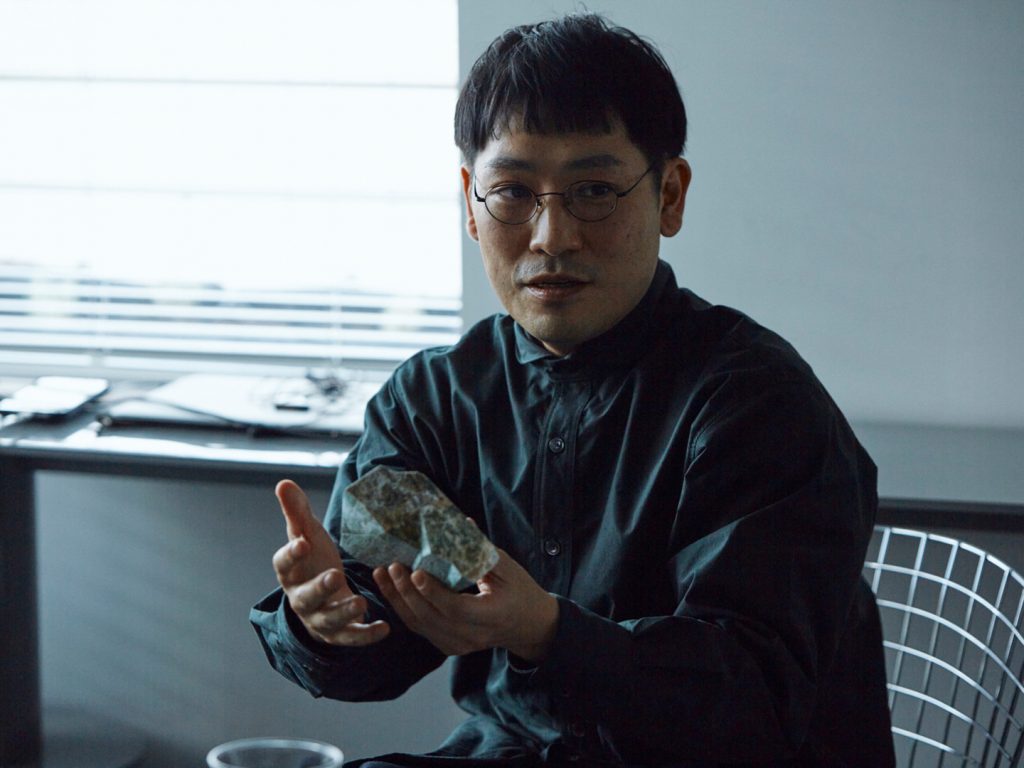
Nakayama: Even if we were to make a stone out of paper, I felt that simply drawing a geometric net was somehow lacking in depth as an existence. For design, simplification is similar to making meaning. Perhaps I wanted to lodge a meaningless complexity in the process of processing data with a computer by going through an action that involves the body and matter.
Sunayama: I think the fact that another person’s body and cognition intervened gave “Kami no Ishi” an intellectual depth. The staff members of Mr. Nakayama’s office who participated in the portrait stone painting competition may have wondered many times why they were doing this. It may sound nothing special, but this work is interesting because of its limited life and physicality. The digital world is infinite, but I still think that something infinite cannot match the allure of something finite.
Creating an incongruous scale
in a world full of size scales
The following video shows the astronauts who landed on the moon aboard Apollo 16 walking toward a rock about the size of a car that can be seen in the distance. But no matter how far they walked, they could not reach the rock – in fact, the rock was further away than they had imagined and was as big as a house, not a car, as in the famous episode. Using this episode as an example, Nakayama begins to talk about the mysterious materiality of the stone.
Nakayama: For example, when we see something made by human beings, such as a house or a building, we have a fixed perception of its size as we see them on a daily basis. However, as the Apollo 16 “House Rock” episode shows, even the most able-bodied astronauts can misjudge the scale of space in a place like the moon, where there is nothing man-made that can be used as a yardstick. When I imagined what it would be like if there were houses or buildings that could not be used as a ruler for size, I thought how nice a stone was (laughs).
Sunayama: While listening to Mr. Nakayama’s story, I was reminded of open-world games in which players can move freely within a given environment. In an open-world game, the player can freely perform various actions, but creating such a game is not a matter of designing freedom, but rather designing what is not possible in the world. In other words, while architecture in real space, for example, is based on the physical conditions that already exist in this world, and creativity is found in the interaction with those conditions, the creation of architecture in a metaverse or game space, for example, must first be designed from the conditions of such a world, which is fundamentally different from the way architecture is created in reality.


Nakayama: In the metaverse, there is no concept of size, similar to the experience on the moon. For example, a person 50,000 meters tall and a person 1 centimeter tall should be able to share the same world, but it is strange that they are all scaled according to the real world. In a world that is surrounded by measures of size, I myself am interested in creating something that cannot be used as a measuring stick in terms of size, like a stone, or a scale that feels strange, from both digital and physical perspectives. For example, I am always concerned that my work, which involves creating architecture in the midst of nature, such as the ocean, huge rocks, and trees that have grown over a long period of time, which essentially has no ruler for size, may fix their scale.
Sunayama: Worlds in which conditions fluctuate in every situation, such as rocks that do not have a fixed scale, game design, and metaverse space, are interesting precisely because they are difficult to define as a world. Also, as Mr. Nakayama says, it is important to think of architecture and human creation as behavior that gives scale and measure to the world, and to have the creators themselves reflect on this behavior in order to give critical depth to what they create.
I want to use “Ki no Ishi” to create an architecture
that is not a measure of things
This project has been ongoing since 2017. In the current exhibition “Cat’s Narrow Road” at the Toyota Municipal Museum of Art (until May 21, 2023), in addition to “Kami no Ishi,” new works “Ki no Ishi (Wood Stone)” and “Nuno no Ishi (Cloth Stone)” are being exhibited, which explore the possibilities of printing. When asked about the future of this project, which has made a unique development from Kami no Ishi, he replied that he would like to create architecture using “Ki no Ishi.

Nakayama: For example, I would like to use “Ki no Ishi” to create an architecture that is not used as a yardstick in terms of size. This project started with paper, and we have been experimenting with printed stone textures using a large printer of about 2 meters square. Basically, any flat material that fits on the bed of the printer can be printed on, and of course, the print ratio is arbitrary, even with the same data. However, at the stage of assembling it into a three-dimensional object, for example, if it exceeds a certain size, it will not be able to stand on its own with paper. There is a clear threshold in the material world, and it is interesting in this series of experiments that the digital data physically demands other mediums (other than paper), as if to say, “If it exceeds this threshold, it can only be made of plywood.”

In the process of increasing the magnification of printing like this, the thinking expands from “Kami no Ishi” to “Ki no Ishi” and then to architecture, and a new condition emerges which is not only a physical condition but also a legal one. Since natural stone does not meet JIS standards (Japanese Industrial Standards), it cannot be used for building structures unless its strength is verified through destructive testing. However, plywood has passed the JIS standard, so “Ki no Ishi” can be used for a structure. I think there are many untested possibilities in the printing technique because what started out as “I want to make something meaningless” somehow ended up as a social rule to realize architecture.
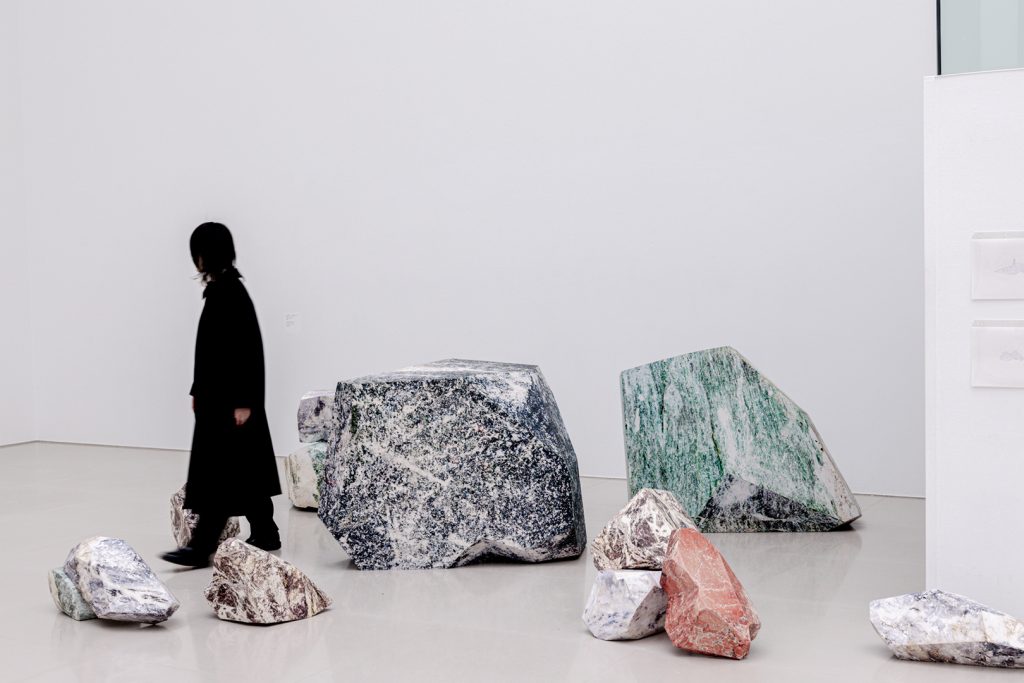
Sunayama: Cloth is the opposite material of stone, so “Nuno no Ishi” was difficult and interesting. “Kami no Ishi,” “Ki no Ishi,” and “Nuno no Ishi” are all nothing more than a collection of ink on base materials, yet this project maximally enjoys the misalignment of pointing to them as stones, and I think it also delves into the brain mechanism of how humans perceive things.
When I was playing with NES as a child and I found a bug, I felt as if I had seen the truth of the world. Since then, I have always believed that the moment a human-constructed world develops a bug, or when its logic deviates or collapses, it reveals the essence of the world and its logic. Bugs occur on a daily basis, not only in digital spaces such as games, but also in physical spaces and in human communication, and it is in these moments that we should find richness and interest.

Guest bio
-
Hideyuki Nakayama
Hideyuki Nakayama
Born in Fukuoka in 1972. Graduated from Tokyo University of the Arts, Department of Architecture in 1998. Completed a master's degree at Tokyo University of the Arts in 2000. After working at Toyo Ito & Associates, Architects, established Hideyuki Nakayama Architecture in 2007. He has been an associate professor at Tokyo University of the Arts since 2014. His major works include "2004," "O Residence," "Y Building," "Y Residence," "Stone Island’s Stone," "Strings and Arcs," "Mitosaya Botanical Distillery," and "Printmaking Studio/ Frans Masereel Centrum" (in collaboration with LIST). Major awards include the SD Review 2004 Kajima Award (2004), the 23rd Yoshioka Award (2007), the Red Dot Design Award (2014), the 17th Environmental and Equipment Design Award for Excellence (2019), and the Japan Society for Finishings Technology Best Artwork Award, Housing Category (2019). His main publications include "Hideyuki Nakayama: Sketching" (Shinjuku Shobo), "Hideyuki Nakayama: 1/1000000000" (LIXIL Publishing), "and then: 5 films of 5 architectures" (TOTO Publishing).
-
Taichi Sunayama
Taichi Sunayama
Associate Professor at Kyoto City University of Arts, Department of General Science of Art (General Science of Art). Specializes in contemporary art, and computational design and architecture. He is involved in production, design, planning, and criticism based on information and materiality in the field of art, including architecture. In 2004, he graduated from the Department of Sculpture at Tama Art University and moved to France. After graduating from ESA Paris in 2008, he worked and collaborated with an architectural design office and a structural design office. He returned to Japan in 2011. In 2016, he received his doctorate in Architecture (Structural Planning) from Tokyo University of the Arts, Graduate School of Fine Arts. His main activities include: representative of the "Materializing Exhibition: Between Information and Material" project and participation in the Japan Pavilion exhibition at the 17th International Architecture Exhibition La Biennale di Venezia.
Exhibition Info
-
Cat’s Narrow Road
Cat’s Narrow Road
Dates: February 25 [Sat.] - May 21 [Sun.], 2023
Closed: Mondays [Open on May 1, 2023]
Hours of Operation: 10:00 AM–5:30 PM [Admission until 5:00 PM]
Admission [advance tickets]: Adults 800 yen, High school and university students 600 yen, Free for junior high school students and younger
Sales locations: Toyota Municipal Museum of Art (until Jan. 29), T-FACE B Bldg. 2F Information (until Feb. 24)
*Reduced opening hours of T-FACE: Saturday, December 31, 2022 (10:00 AM–6:00 PM), Closed: Sunday, January 1 and Tuesday, February 21, 2023.
Admission [Same-day ticket]: Adults 1,000 yen, High school and university students 800 yen, Free for junior high school students and younger
-200 yen discount for groups of 20 or more (cannot be combined with other discounts)
Admission fee reductions and exemptions
-High school and university students must present their student ID card.
-The following visitors will be admitted free of charge. (Proof required)
High school students residing or attending school in Toyota City
Residents of Toyota City who are 18 years of age or younger (until the first March 31st after they turn 18)
Residents of Toyota City who are 70 years of age or older
Persons with a disability certificate (1 attendant)
-For other information on reduced admission fees, discounts, etc., please click here.
-Click here for more information on the great value annual passport.
Hosted by: Toyota Municipal Museum of Art
Cooperated by: Aoyama Meguro, KAYOKOYUKI, Tomio Koyama Gallery, SUNAKI Inc., Take Ninagawa, Hideyuki Nakayama Architecture
Supported by: GEMINI Laboratory by TOPPAN
Co-created by
-
Mami Hidaka
Writer
Mami Hidaka
Writer
Artist/Writer. PR Assistant For NFT Related Companies. Born In Tokyo, Japan. Graduated In 2018 From The Department Of Painting, Tama Art University, With A Major In Oil Painting, And Awarded The Prize For Excellence In Graduation Works. As A Contributor To The Art Magazine "BIJUTSUTECHO" Since 2018, And Also Writes For "I-D", "Tattva", "BRUTUS", And Other Publications, Focusing On Contemporary Art And Capturing Culture From A Variety Of Perspectives.
-
Shigeta Kobayashi
Photographer
Shigeta Kobayashi
Photographer
Born In Niigata, Japan In 1985, Photographer. Focusing On The Layering Of Human Physical Actions And Flows In Nature, He Creates Photographic Works By Treating The Materials He Photographs As Fragments Of These Layers. His Recent Works Include "AURORA" (2019) And "Cairn" (2020), Which Were Taken During His Two Consecutive Visits To Iceland. In "Stratum" (2022), Based On The Experience Of His Second Visit To Iceland, He Uses Photographs That Remain Vivid As A Record Of That Visit To Establish The Fluctuation Of Memories That Fade Over Time. In Another Work, "Yoha" (2020), Based On Photographs Taken Of The Indigo-Dyeing Process In Tokushima, Expresses The Act Of "Dyeing" As Printed Matter.
Tag
Share
Discussion
Index
Index
Archives
Recommend
Recommend
Recommend
Recommend
Recommend
-

{ Community }
Architect Ken Shigematsu and Art Planning Producer Ou Sugiyama Talk About Creative Urban Landscapes (Part 1)
Architect Ken Shigematsu and Art Planning Producer Ou Sugiyama Talk About Creative Urban Landscapes (Part 1)
Architect Ken Shigematsu and Art Planning Producer Ou Sugiyama Talk About Creative Urban Landscapes (Part 1)
-

{ Prototype }
A World In The Nostalgic Mirror “Mirror”—Ayumi Kanno “GEMINI EXHIBITION: Debug Scene” Artist Interview 05
A World In The Nostalgic Mirror “Mirror”—Ayumi Kanno “GEMINI EXHIBITION: Debug Scene” Artist Interview 05
A World In The Nostalgic Mirror “Mirror”—Ayumi Kanno “GEMINI EXHIBITION: Debug Scene” Artist Interview 05
-

{ Community }
Etsuko Ichihara Talks About Whether Virtual Space Can Reproduce The “Feeling Of A Festival” In Reality.
Etsuko Ichihara Talks About Whether Virtual Space Can Reproduce The “Feeling Of A Festival” In Reality.
Etsuko Ichihara Talks About Whether Virtual Space Can Reproduce The “Feeling Of A Festival” In Reality.
-

{ Community }
What Are The Possibilities Of The Mirror World? More Than 4 Hours Of Discussions Between Various Experts
What Are The Possibilities Of The Mirror World? More Than 4 Hours Of Discussions Between Various Experts
What Are The Possibilities Of The Mirror World? More Than 4 Hours Of Discussions Between Various Experts
Hot topics
Hot topics
Hot topics
Hot topics
Hot topics
-

{ Community }
Scent Transcends Memory to Change Behavior. The Future of Digital x Olfaction, by Scent Marketing Pro Gouchi Hamada
Scent Transcends Memory to Change Behavior. The Future of Digital x Olfaction, by Scent Marketing Pro Gouchi Hamada
Scent Transcends Memory to Change Behavior. The Future of Digital x Olfaction, by Scent Marketing Pro Gouchi Hamada
-

{ Community }
The stage is a restroom designed by Tadao Ando. Possibilities of media mix that GEMINI pioneers.
The stage is a restroom designed by Tadao Ando. Possibilities of media mix that GEMINI pioneers.
The stage is a restroom designed by Tadao Ando. Possibilities of media mix that GEMINI pioneers.
-

{ Community }
“Conveying the Moment of ‘Now’ in History: Catalan Artist Xavi Bové’s Light Expressions”
“Conveying the Moment of ‘Now’ in History: Catalan Artist Xavi Bové’s Light Expressions”
“Conveying the Moment of ‘Now’ in History: Catalan Artist Xavi Bové’s Light Expressions”
-

{ Community }
“Designing with Heart: How Amanda Talbot is shaping a better future through emotionally intelligent AI”
“Designing with Heart: How Amanda Talbot is shaping a better future through emotionally intelligent AI”
“Designing with Heart: How Amanda Talbot is shaping a better future through emotionally intelligent AI”
-

{ Community }
Unearthing the Future: How ancient history can guide modern innovation with Darius Arya
Unearthing the Future: How ancient history can guide modern innovation with Darius Arya
Unearthing the Future: How ancient history can guide modern innovation with Darius Arya
-

{ Community }
Interview with Masayoshi Yokoyama from Ryu Ga Gotoku Studio. Talks about reality in games and the future of the industry
Interview with Masayoshi Yokoyama from Ryu Ga Gotoku Studio. Talks about reality in games and the future of the industry
Interview with Masayoshi Yokoyama from Ryu Ga Gotoku Studio. Talks about reality in games and the future of the industry
-

{ Community }
The new form of pilgrimage. What is the border of real and fictional worlds that Petra Szemán pictures?
The new form of pilgrimage. What is the border of real and fictional worlds that Petra Szemán pictures?
The new form of pilgrimage. What is the border of real and fictional worlds that Petra Szemán pictures?
Special
Special
Special
Special
Special
Featured articles spun from unique perspectives.
What Is
“mirror world”...
What Is
“mirror world”...
What Is
“mirror world”...
What Is
“mirror world”...
What Is
“mirror world”...
“mirror world”... What Is
“mirror world”... What Is
“mirror world”... What Is
“mirror world”... What Is
“mirror world”...
Go Down
Go Down
Go Down
Go Down
Go Down
The Rabbit
The Rabbit
The Rabbit
The Rabbit
The Rabbit
Hole!
Hole!
Hole!
Hole!
Hole!
Welcome To Wonderland! Would You Like To Participate In PROJECT GEMINI?




